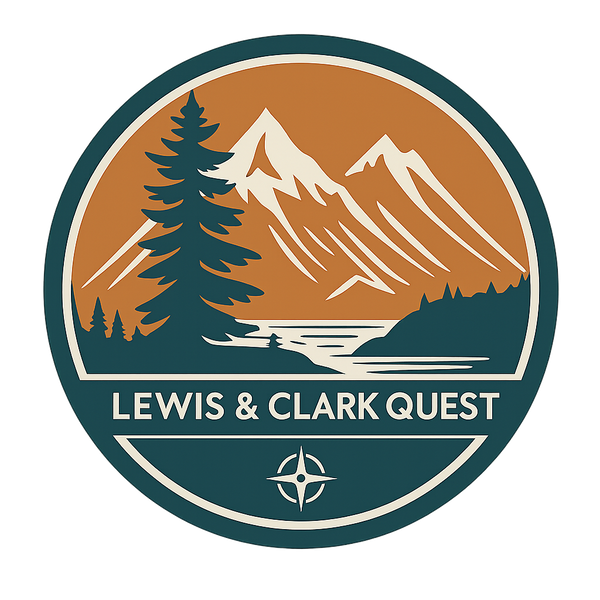
5 Things Lewis & Clark Got Right — and 3 They Really Didn’t
Share
What the Corps of Discovery teaches us about vision, mistakes, and the power of getting out there anyway.
When Meriwether Lewis and William Clark set out in 1804, they weren’t just mapping an uncharted wilderness — they were stepping into the unknown with ambition, optimism, and a whole lot of guesswork. Their journey, commissioned by President Thomas Jefferson, was one of the most ambitious expeditions in American history.
But like any bold venture, it was far from perfect.
As we build our own raft and retrace their steps (and strokes), we’re constantly reminded that history is messy, courageous, and full of both insight and error. Here are five things Lewis & Clark got impressively right — and three that they didn’t.
What They Got Right
1. Choosing the Right Team (Mostly)
The Corps of Discovery wasn’t just made up of soldiers — it included scouts, French interpreters, a Black frontiersman, and most famously, a young Shoshone woman named Sacagawea. The diversity of skills (and perspectives) helped them navigate everything from grizzly bears to tribal diplomacy.
2. Embracing Indigenous Knowledge
Despite the colonial nature of their mission, Lewis and Clark relied heavily on the guidance, food, and generosity of dozens of Native tribes. Without Indigenous help, they wouldn’t have made it through the Bitterroots — or the winter.
3. Scientific Curiosity
They catalogued 122 animals and 178 plants that were new to Western science, bringing back specimens, maps, and detailed journal entries. They weren’t just explorers — they were naturalists with notebooks.
4. Discipline and Structure
The expedition ran like a military unit, but with surprising flexibility. Daily logs, democratic votes (Sacagawea and York, an enslaved man, were both given voting rights at one point), and shared duties made the journey more equitable than many expected.
5. Sheer Grit
From freezing rivers to food shortages to near mutinies, the Corps pushed on for over two years across 8,000+ miles. That’s stamina we admire — especially as we prep for our own modern river challenge.
What They Got Wrong
1. Looking for a Northwest Passage That Didn’t Exist
Jefferson hoped they’d find a water route connecting the Missouri River to the Pacific. Spoiler: there isn’t one. The Rocky Mountains had other plans.
2. Misunderstanding Tribal Nations
While some diplomacy efforts were genuine, others were naive or patronizing. The expedition was often viewed with suspicion, and the U.S. government’s promises (which Lewis and Clark passed along) were rarely honored.
3. Underestimating the Terrain
Despite preparation, the sheer difficulty of crossing mountain ranges, forging rivers, and surviving harsh winters caught them off guard. Nature was a relentless teacher.
History, Revisited
As we retrace their route by raft, we’re not just paddling in their wake — we’re reflecting on what exploration means today. The mistakes are just as important as the victories. Because exploration isn’t about perfection — it’s about persistence, perspective, and a willingness to revise the map as you go.
